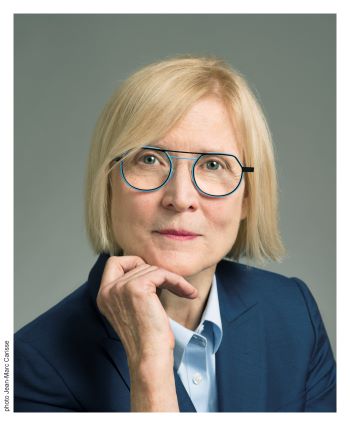Playing offense to attract top researchers and retain Canadian graduates
 Roseann O’Reilly Runte is President and CEO of Runte and Associates.
Roseann O’Reilly Runte is President and CEO of Runte and Associates.
When offshore oil began to yield significant revenues in Louisiana, local universities benefited and were able to expand, systematically building some top-notch research programs. They did not simply go after a few professors. They swallowed whole labs, entire departments and research programs. The competition was, to put it succinctly, cutthroat.
This road to success is not restricted to the serendipitous discovery and development of natural resources; it held and still holds true for regions vying for military contracts or major infrastructure investments such as synchrotrons or Arctic research facilities. It also operates independently of the promise of immediate economic gain and may often be tied to more speculative investments, donations and the potential development of resources.
The race for institutional rankings that would attract students and investments also has seen and still sees institutions recruiting stars who rarely move from one institution to another alone. The stars come accompanied by their research group, colleagues and perhaps a dozen graduate students, all of whom are funded by the “raiding” institution.
This would always leave an unfortunate few students who would follow the star researcher on their own dime or start anew with another supervisor. Sometimes, an entire program would close, and on other occasions, the institution would build a recovery plan that might involve series of raids on yet other institutions.
Even today in these difficult times, university presidents must be vigilant to thwart the efforts of competing institutions to attract away their top stars. However, they themselves are, with their vice-presidents and deans, constantly on the lookout for opportunities to add bright new constellations to their research portfolios.
Much has recently been said about countries and institutions taking advantage of opportunities to recruit top scholars from American universities.
Along with others, I have suggested that we create opportunities to attract the very best in the world and to retain our graduates. We should carefully select areas in which we would recruit in order to attract industry and business along with the researchers. The Government of Québec has moved ahead with a similar plan and the University Health Network and the University of Toronto have also initiated searches.
There is, however, another issue to be considered – one we have observed around the world. Star researchers want their team and students to join them. This is possible nationally as they bring their grants with them to help cover the costs of setting up a new lab and establishing their research team in a new institution.
However, government grants are usually not internationally transferrable; Canadian institutions and governments must therefore pool their resources and garner support from industry and business to attract and retain these leading teams.
Much research abroad is already funded by industry. We should aim to attract these investments along with the researchers. At the same time, we should work to bring Canadians back and to retain our graduates.
Let us begin by concentrating our initial efforts and resources in a small number of fields that might include areas like green energy, vaccine discovery, applied genetics, quantum computing, technologies and manufacturing, AI, security and defense. Connecting researchers to an area of economic growth and scientific excellence could create a double win: attracting industry and business to an environment favorable to their success and assuring funding for the researchers whose work will contribute to the continued success of the investors.
Another initiative is to double down on collaboration and, where in the past, large laboratories at major institutions south of the border did not necessarily require partners in Canada to sustain their work, this might no longer be the case. Indeed, researchers in the U.S. are being cut off from their international partners due to new requirements.
If research work with industrial support were transferred here, researchers themselves could remain in their current positions but spend time and make virtual connections (just as we in Canada are connected to CERN in Switzerland. We house data and our students are connected virtually to labs which they visit with their faculty research mentors who are designing major international experiments.) They could continue their work which would be funded and located in Canada.
Additionally, Canadian institutions and governments could come together to rapidly create a list of priorities: areas where we have expertise and the desire to develop in Canada. We could advertise for joint proposals from researchers, institutions and industry to develop their work here together. If researchers can bring their funds with them and we look at innovative approaches to supporting the important research work, we can realize the promise of the future.
As Canada is beginning to address its productivity deficit and our capacity to turn research into economic rewards, let us be creative and be prepared to unlock the door when opportunity knocks, and to embrace innovative thinking and realize the endless possibilities that lie ahead.
R$
| Organizations: | |
| People: | |
| Topics: |
Events For Leaders in
Science, Tech, Innovation, and Policy
Discuss and learn from those in the know at our virtual and in-person events.
See Upcoming Events
You have 0 free articles remaining.
Don't miss out - start your free trial today.
Start your FREE trial Already a member? Log in
By using this website, you agree to our use of cookies. We use cookies to provide you with a great experience and to help our website run effectively in accordance with our Privacy Policy and Terms of Service.


.png)

